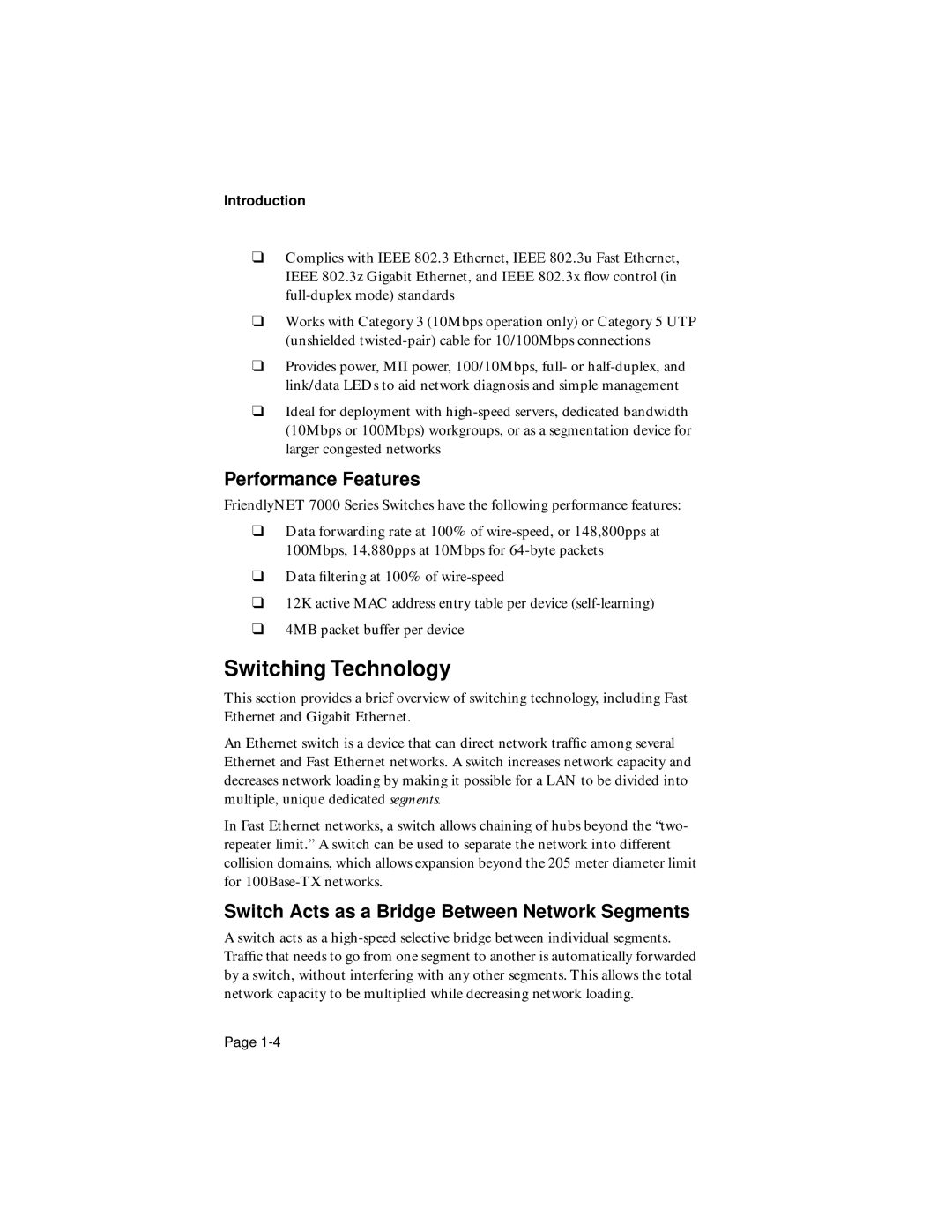Introduction
❑Complies with IEEE 802.3 Ethernet, IEEE 802.3u Fast Ethernet, IEEE 802.3z Gigabit Ethernet, and IEEE 802.3x flow control (in
❑Works with Category 3 (10Mbps operation only) or Category 5 UTP (unshielded
❑Provides power, MII power, 100/10Mbps, full- or
❑Ideal for deployment with
Performance Features
FriendlyNET 7000 Series Switches have the following performance features:
❑Data forwarding rate at 100% of
❑Data filtering at 100% of
❑12K active MAC address entry table per device
❑4MB packet buffer per device
Switching Technology
This section provides a brief overview of switching technology, including Fast Ethernet and Gigabit Ethernet.
An Ethernet switch is a device that can direct network traffic among several Ethernet and Fast Ethernet networks. A switch increases network capacity and decreases network loading by making it possible for a LAN to be divided into multiple, unique dedicated segments.
In Fast Ethernet networks, a switch allows chaining of hubs beyond the “two- repeater limit.” A switch can be used to separate the network into different collision domains, which allows expansion beyond the 205 meter diameter limit for
Switch Acts as a Bridge Between Network Segments
A switch acts as a
Page
